The Managing Committee of Longos Cultural Society "Lord Byron" has organised an
EXCURSION to
Lake Plastiras,
Elati,
Pertouli
Trikala and
Kalambaka/Meteorafrom Friday, September 29 to Sunday, Oktober 1, 2017.
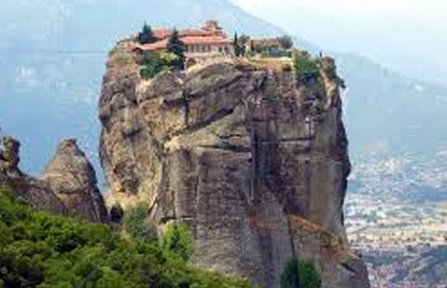
The Managing Committee of Longos Cultural Society "Lord Byron" has organised anEXCURSION toLake Plastiras,
|

|
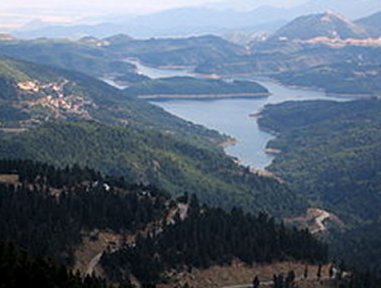
|
Lake PlastirasLake Plastiras (also called Tavropos Reservoir) is an artificial lake fed by Tavropos (Megdovas) river, located in Karditsa regional unit, near the city of Karditsa. The lake is named after the Greek general and politician Nikolaos Plastiras, who was the first to visualize the construction of an artificial lake in the area.After the war, the idea was revived by Plastiras as he was proclaimed Prime Minister. The Power Corporation adopted the project as part of their effort to electrify the country. The building of the dam started on December 14, 1955. On October 30, 1960 the dam was officially inaugurated, although the flooding may have started as early as the last months of 1959. |
ElatiElati - a cosmopolitan village in Thessaly at the southern slopes of the Pindos mountain range at an altitude of 950 metres. The beautiful, picturesque village of Elati is the largest of the alpine villages in this region. It is located near to Petrouli’s ski resort.The village was located more west and clother to the river until it was destroyed by occupation troops in 1943.
|
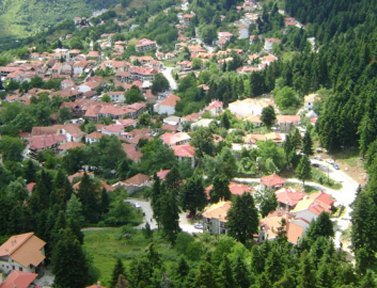
|

|
PertouliPertouli, with its dense forests and high tourist standards is one of the main attractions of northern Greece all year round. A heavenly green landscape with thousands of square metres of lush vegetation, natural springs, rushing rivers and seasonal lakes create a stunning sight. It is situated at an altitude of 1,150 metres.The name Pertouli is most famous for the nearby Ski resort that is very popular with snow sports fans. The area around the ski resort has one of the most beautiful mountainous scenery of central Greece and the ski runs twist and turn through a fir-covered mountainside.
|
TrikalaTrikala is a city in northwestern Thessaly and the capital of the Trikala regional unit. The city straddles the Lithaios river, which is a tributary of Pineios.The city of Trikala is built on the ancient city of Trikka or Trikke, which was founded around the 3rd millennium BC and took its name from the nymph Trikke. In 1348, Thessaly was conquered by Stephen Dushan and incorporated into the newly established Serbian Empire until the Ottoman conquest of Thessaly in 1393/4 Under Ottoman rule, the city was called Tırhala in Turkish. In 1881 with the Treaty of Constantinople
|
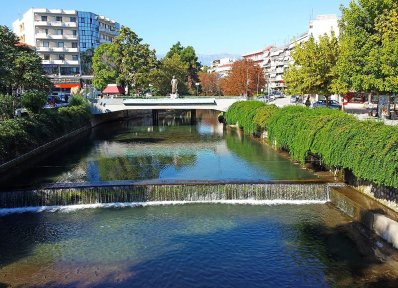
|
|
between the Ottoman Empire and the Kingdom of Greece, the city passed in Greek sovereignty, along with the rest of Thessaly. It became occupied again by Ottoman forces briefly during the Greco-Turkish War of 1897. The municipality Trikala has as official name the Homeric name Trikka: Dimos Trikkeon. Trikala played an important role during the Greek Resistance. The officer of the Hellenic Army, who later joined ELAS (Greek People's Liberation Army ), Stefanos Sarafis, was born in Trkala. The corpses of Aris Velouchiotis, the most prominent leader and chief instigator of ELAS, and his second in command, Leon Javellas, were subsequently decapitated, and the heads displayed, hanging from a lamp post in the central square of the town of Trikala. On October 18, 1944 the city was liberated of Nazi occupation. The famous songwriter and bouzouki player Vassilis Tsitsanis was born in Trikala too. He became one of the leading Greek composers of his time and is widely regarded as one of the founders of modern Rebetiko and Laiko music. Tsitsanis wrote more than 500 songs and is still remembered as an extraordinary composer and bouzouki player.
|
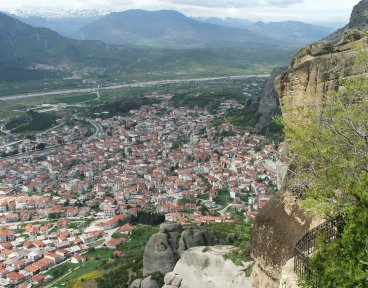
|
Kalambaka-MeteoraKalambaka is a town and a municipality in the Trikala regional unit, part of Thessaly, in the nort-west of the plain formed by river Pineios and tributaries.The town was built on the location of the ancient city of Aiginion. The Hellenic Culture Museum is located in the city center of Kalambaka and houses the private collection of Mr Pavlos Balogiannis dedicated to the history of Greek education and learning, aspiring to serve its educational and cultural orientation. Kalambaka has two twin towns: Schwabach, Germany and Le Haillan, France. |
|
MeteoraThe Meteora is a rock formation hosting one of the largest and most precipitously built complexes of Eastern Orthodox monasteries, second in importance only to Mount Athos. The monasteries are built on immense natural pillars and hill-like rounded boulders that dominate the local area. Meteora is included on the UNESCO World Heritage List.As early as the 11th century, monks occupied the caverns of Meteora. However, monasteries were not built until the 14th century, when the monks sought somewhere to hide in the face of an increasing number of Turkish attacks on Greece. At this time, access to the top was via removable ladders or windlass. Nowadays, getting up is a lot simpler due to steps being carved into the rock during the 1920s. Of the 24 monasteries, only 6 (Metamórphosis, Varlaám, Rousánou, Agía Triáda, Agios Stéfanos and Agios Nikólaos Anapavsás) are still functioning. |
 |
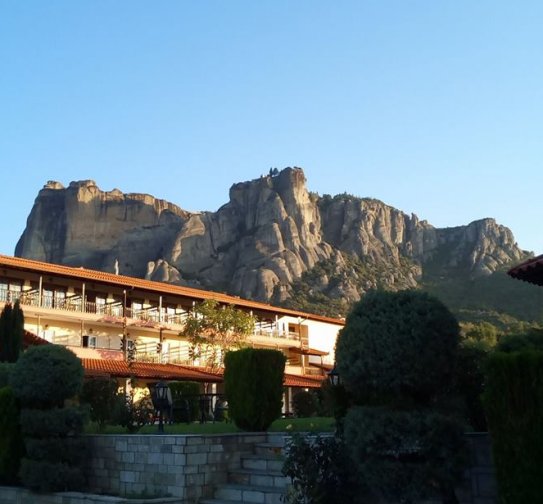 |
Pertouli Kalambaka